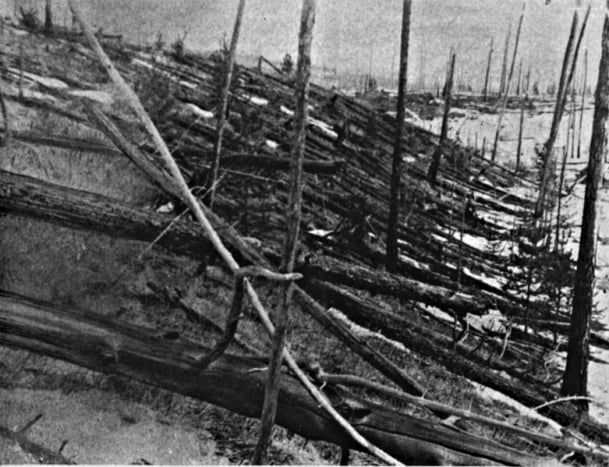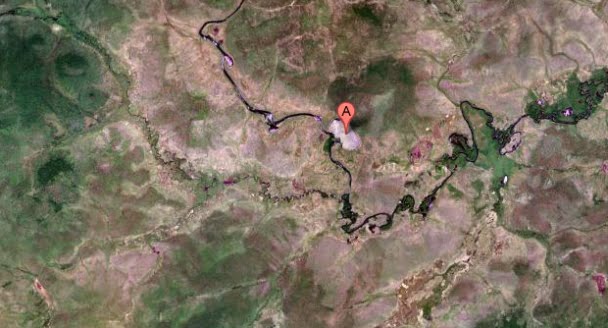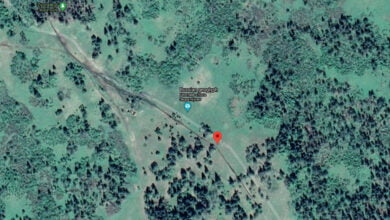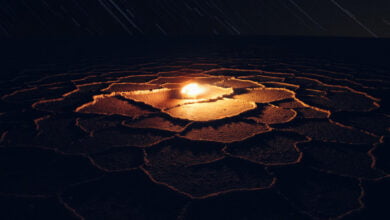
It began with a “bluish light,” a glowing object as bright as the sun. It swept across the skies of Siberia in the early morning of June 30, 1908, at about 7:17 a.m.
Then, a flash. A loud explosion. An invisible war near the Podkamennaya Tunguska River.
According to one eyewitness report, “the sky split in two and fire appeared high and wide over the forest…but then the sky shut closed, and a strong thump sounded, and I was thrown a few metres.”
All told, the force of the shockwave was likely equivalent to “1,000 times the power” of Little Boy, the atomic bomb dropped on Hiroshima in 1945. For days after the event, the skies above Asia and Europe were haunted by a mysterious glow.
The Daily Mail reports that “Britain was lit for several days by a beautiful white and yellow sky, bright enough for midnight games of cricket and golf across the country.”
But to this day, the exact cause of this strange occurrence remains unknown. It has come to be called the Tunguska Event.
What Really Happened?

Over the years, the lack of any real evidence for the source of the event led to various conspiracy theories and odd ideas.
One of the more compelling explanations is that it was caused by a sort of “natural” hydrogen bomb, which may have occurred via a “nuclear fusion reaction” within a comet. This was dismissed due to a lack of radiation at the sight of the event, among other reasons.
There were other explanations, however, such as a black hole passing through Earth, or some kind of antimatter catastrophe. Nikola Tesla even entered the list of possibilities; many claimed he caused the explosion during an experiment involving the Wardenclyffe Tower, or perhaps a doomsday particle beam.
As exciting as these possibilities sound, the most likely cause of the Tunguska Event was probably something a little more ordinary.
Was The Tunguska Event Caused By A Meteorite?

Initial expeditions to the site of the incident — the first being in 1927 — concluded that the bright light and explosion was likely caused by a meteorite impact.
However, there was no crater. Scorched earth surrounded the epicenter of the explosion, but trees surrounding the initial blast area were strangely left standing, and only those farther away were knocked down.
Just as well, the glowing skies and little physical evidence of an impact led many to believe it was actually a comet that had exploded and disintegrated. The atmospheric glow may have been caused by reflections of water vapor.
Later expeditions would support the meteorite hypothesis. “Microscopic silicate and magnetite spheres” were found in the soil, containing “high proportions of nickel relative to iron.” This indicated a clear link to a meteoric origin, most probably a meteorite airburst given the lack of other physical evidence.
In fact, according to the U.S. Air Force, large meteorite airbursts occur within the upper atmosphere at least once a year. It’s just rare for them to be so massive and to occur so close to the ground, as was potentially the case with the Tunguska explosion.
This is what most scientists believe to have happened. If it were an airburst, the trees surrounding the epicenter would have been left standing because the airburst would have forced air downward vertically, then outward. And the mysterious, glowing skies would have likely been the result of meteoric dust and other debris lingering in the atmosphere.
Even so, conclusive evidence of the source of the Tunguska explosion has eluded researchers since it occurred in 1908, and its origins are still highly debated.
Have We Finally Uncovered Definitive Evidence Of The Tunguska Event’s Origins?
Italian scientists from the University Of Bologna now claim they have uncovered evidence of the Tunguska meteorite in Lake Cheko, a location long thought to have been an “impact crater” where at least one fragment of the obliterated meteoroid made it to solid ground (theoretically forming the lake).
Through a form of scanning, they believe they’ve found “chunks” of the meteorite.
According to the researchers, they arrived at their findings using
“…a magnetic and seismic reflection study of…Lake Cheko, located about 8km NW of the inferred explosion epicenter, that was proposed to be an impact crater left by a fragment of the Tunguska cosmic body.”
This discovery, they say, “supports the impact crater origin for Lake Cheko.”
Perhaps the meteoric airburst explanation is not as fanciful or compelling as a Tesla Doomsday Device or extraterrestrial interference, but we’ll have to wait for further information and research before we know what really happened, if ever. We may, in fact, never know.

The saga continues.






